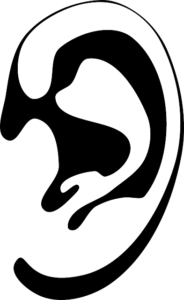Understanding the Impact of Lifestyle Choices on Earwax Production
Cerumen impaction, commonly referred to as earwax blockage, occurs when your body creates an excessive amount of earwax or when existing earwax is pushed too deeply into the ear canal. This condition can lead to a temporary inability to hear from the affected ear, causing frustration and concern. Typically, the hearing loss resolves once the extra earwax is effectively removed. While many individuals can manage this issue with simple at-home remedies, there are cases where professional medical assistance is necessary to thoroughly clean and unclog an earwax blockage. It’s important to remember that while earwax serves a vital function in keeping the ears clean, excessive buildup can hinder hearing and overall ear health.
Excessive earwax buildup can lead to a variety of health issues, including hearing loss, physical discomfort, tinnitus (ringing in the ears), and even ear infections. While you may not have control over the amount of earwax your body produces—largely determined by genetic factors—there are lifestyle choices and daily habits that you can manage to mitigate this problem.
Identifying Common Causes of Earwax Blockage
It is entirely normal and healthy to have earwax in your ears, as it serves as a protective barrier for the inner ear against contaminants such as bacteria and dust. Typically, earwax is gradually expelled from the ear, preventing any blockage from forming. However, blockages can arise if earwax is pushed too deeply into the ear or if there is an overproduction of earwax. Understanding the habits that contribute to earwax buildup is crucial. For instance, frequent use of headphones and earplugs can stimulate earwax production due to the constant contact and pressure on the ear canal.
Hearing care professionals have noted that devices like headphones, earplugs, and hearing aids can induce earwax formation as a protective response when the ears are in discomfort or under strain. If you notice an increase in earwax production, consider reducing your use of these devices. If that is not feasible—especially with hearing aids—ensure that they are cleaned regularly to minimize bacteria buildup.
Avoiding Harmful Ear Cleaning Practices
Many individuals mistakenly believe that using cotton swabs and similar items to clean their ears is effective for removing earwax. In reality, these practices can irritate and even damage sensitive skin within the ear, leading to increased earwax production. Furthermore, improper cleaning can inadvertently push earwax and other debris deeper into the ear canal, posing a risk of injury to the eardrum. The frequency of ear cleaning also plays a significant role in earwax accumulation; excessive use of even mild cleansing agents like hydrogen peroxide can strip the ear of necessary moisture, leading to irritation and dryness. If you notice such effects, limit your cleaning regimen to once or twice a month to allow your body to maintain a healthy earwax balance.
Managing Environmental Factors that Contribute to Earwax Buildup
Seasonal changes often bring about increased pollen counts, which can significantly affect your sinuses and ears. Living near industrial areas or working in dusty environments can also introduce pollutants that irritate your ears, prompting a surge in earwax production. If controlling your immediate environment is not an option, consider taking protective measures such as wearing hats, using hearing protection, and limiting outdoor activities during high pollen or pollution periods. These steps can help reduce irritation and the subsequent need for your body to produce excess earwax.
Recognizing the Symptoms of Earwax Blockage for Timely Intervention
One of the most common indications of earwax blockage is a noticeable loss of hearing in the affected ear. Fortunately, hearing typically returns to normal once the blockage is resolved. Other frequently experienced symptoms include a sensation of fullness in the ear, earache, and unusual sounds such as ringing or buzzing. It’s worth noting that earwax blockage generally affects one ear at a time, so if you’re experiencing these symptoms, it’s advisable to consult a doctor to eliminate other potential causes. Your healthcare provider will likely conduct a thorough examination of your ear using an otoscope to identify whether earwax is the culprit behind your symptoms.
Effective Treatments for Earwax Congestion: Professional and At-Home Solutions
When dealing with earwax blockage, your doctor may provide treatment in their office or guide you on safe at-home methods. In cases where there’s concern about damage to the eardrum, professional removal of earwax is crucial to protect this sensitive area. Depending on the severity of the blockage, your healthcare provider might recommend various techniques, including vacuuming the ear, using a curette, or employing specialized tools designed for earwax removal.
At-Home Strategies for Safe Earwax Removal
For those looking to manage earwax buildup at home, several effective remedies can assist in softening and removing earwax. Options include using mineral oil, glycerin, or over-the-counter solutions like Debrox, which contains carbamide peroxide. To utilize these treatments, simply place a few drops into the ear canal using a pipette, repeating this process twice a day for a few days. With time, the softened earwax should naturally fall out. Another method involves rinsing; fill a rubber ball syringe with warm water, tilt your head, and gently squeeze the syringe to allow water to flow into your ear canal. This process may need to be repeated several times to effectively clear the blockage. Remember to thoroughly dry your ear afterward to prevent moisture accumulation.
Explore More About Earwax Management at Microsuction Edgware
What to Expect During a Doctor’s Visit for Earwax Removal
If your at-home methods do not yield results, your specialist may employ additional techniques such as vacuuming, using a curette, or utilizing specialized instruments to alleviate the blockage. It’s essential to understand that there is no absolute guarantee against future earwax blockages. If your body tends to produce an excessive amount of earwax, you may find yourself facing this issue multiple times throughout your life. However, earwax blockage is typically a temporary concern, and symptoms should subside once the blockage is addressed. In some cases, individuals may experience fever, ear discharge, or severe ear pain. If you encounter these unusual symptoms, seek medical attention promptly for appropriate earwax removal.
You may not have control over the natural production of earwax in your body, but by adopting healthier lifestyle choices and maintaining proper ear hygiene, you can significantly enhance your ear health, preserve your hearing, and reduce the risk of infections.
Sponsored by – Microsuction Edgware
The post Understanding the Impact of Lifestyle Choices on Earwax Production. appeared first on https://gqcentral.co.uk



Comments are closed